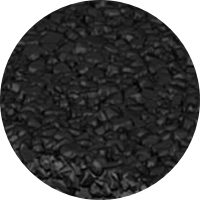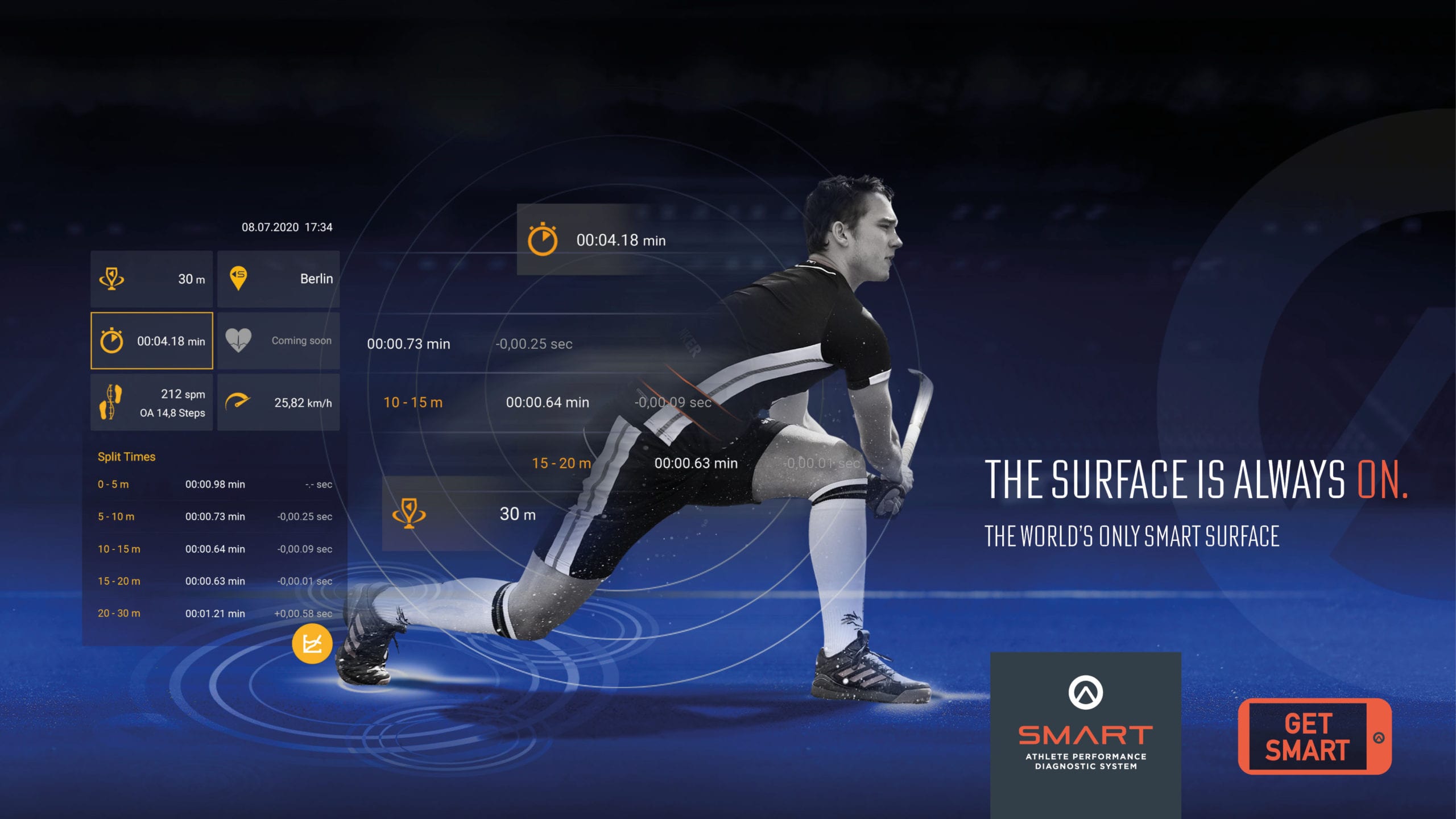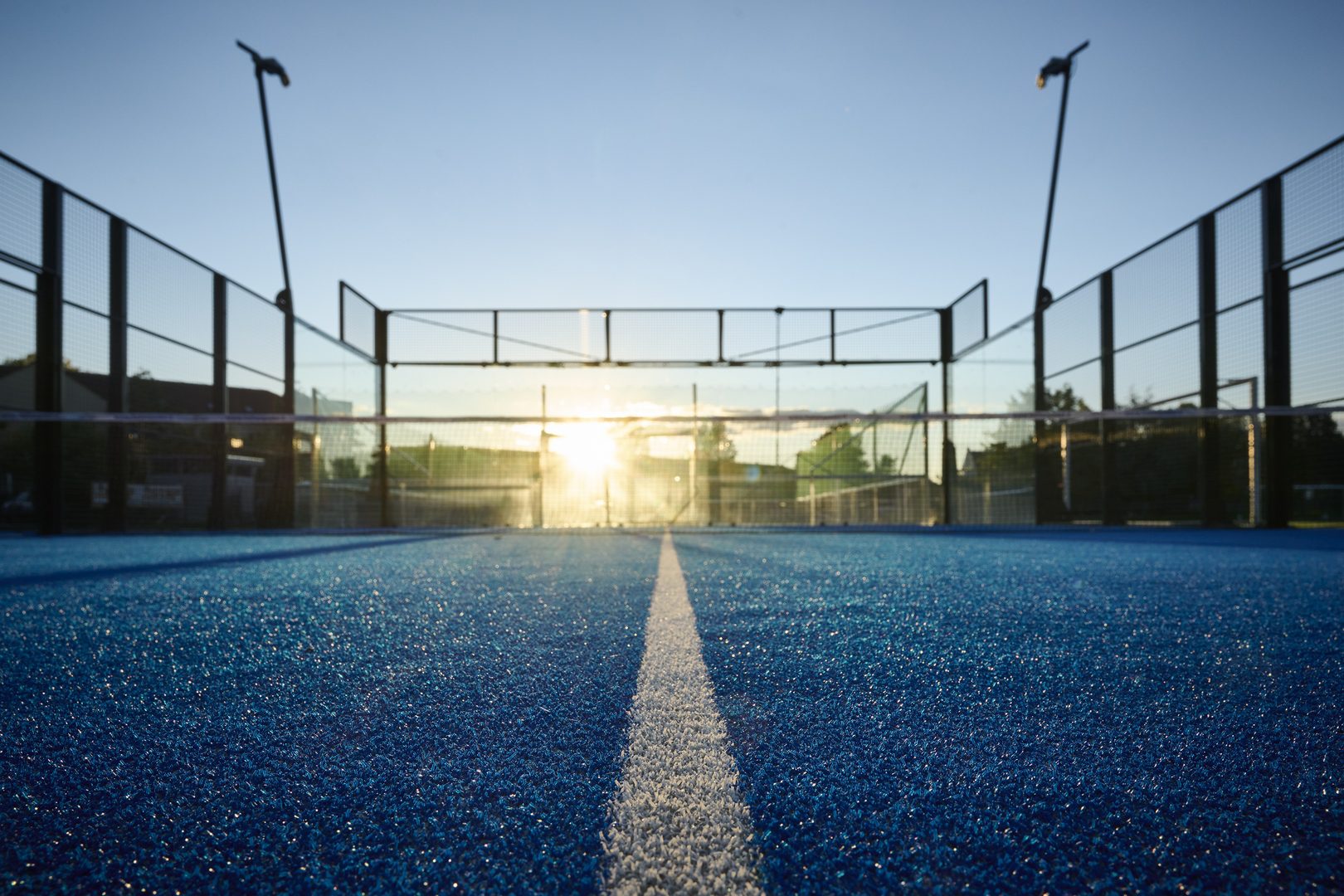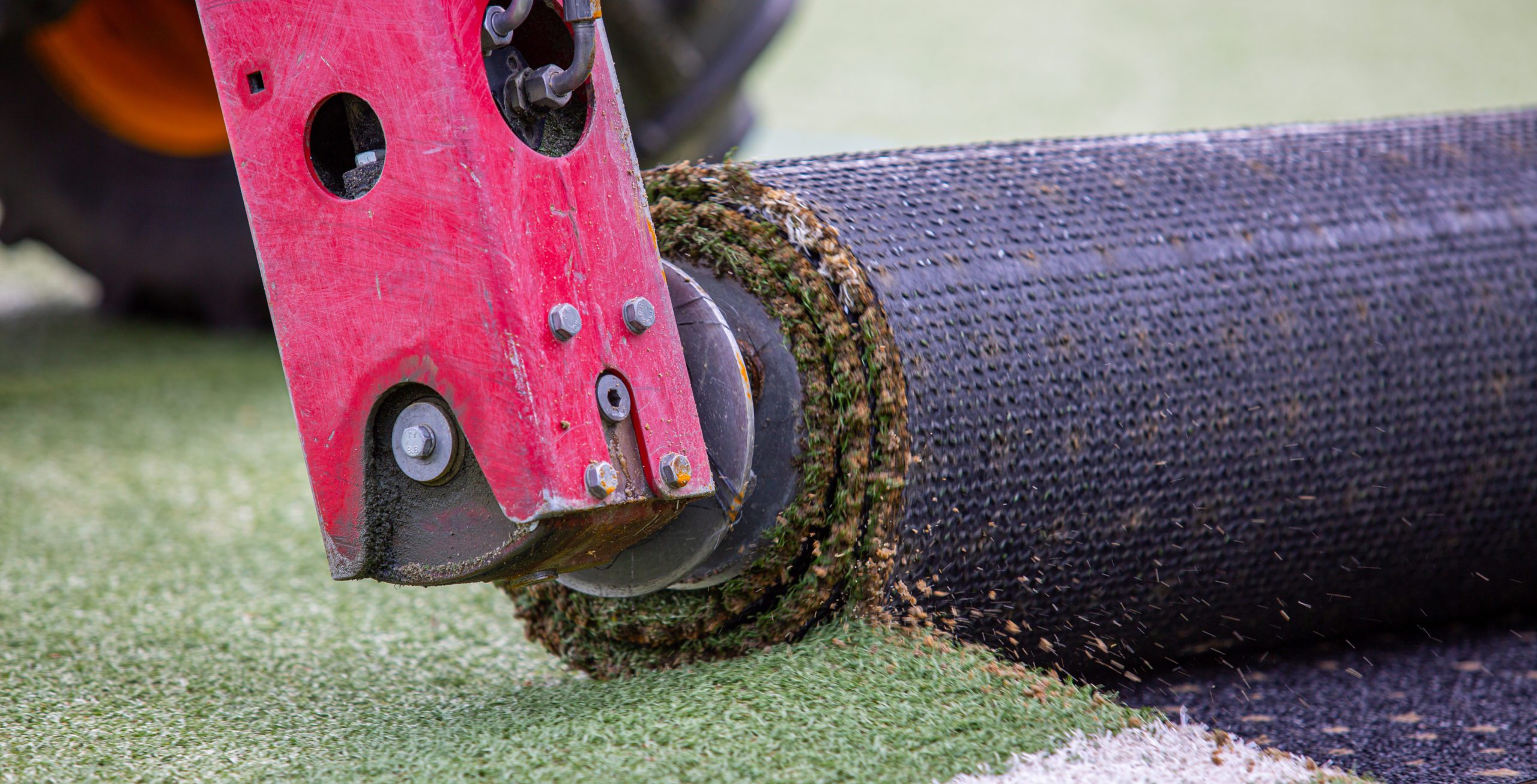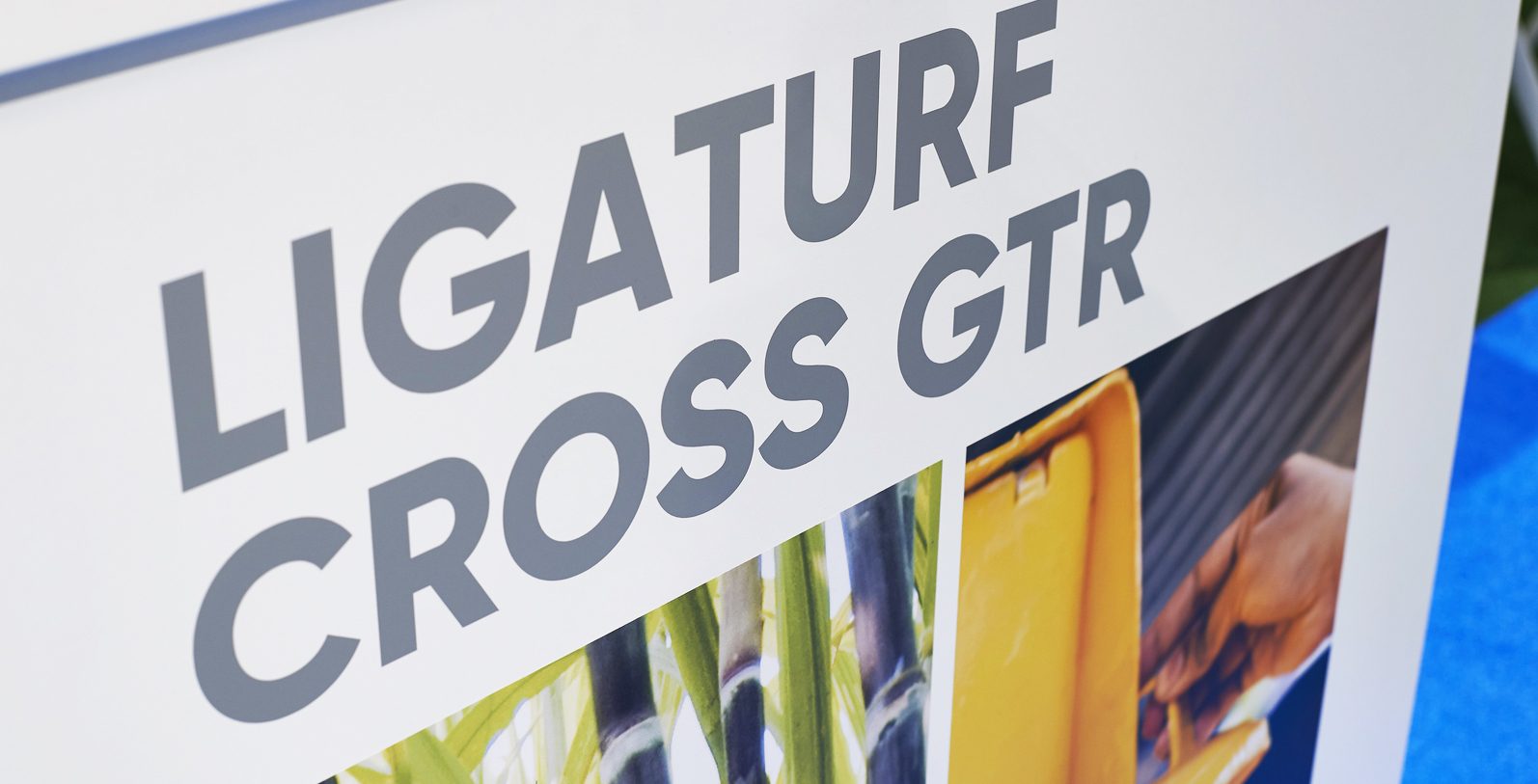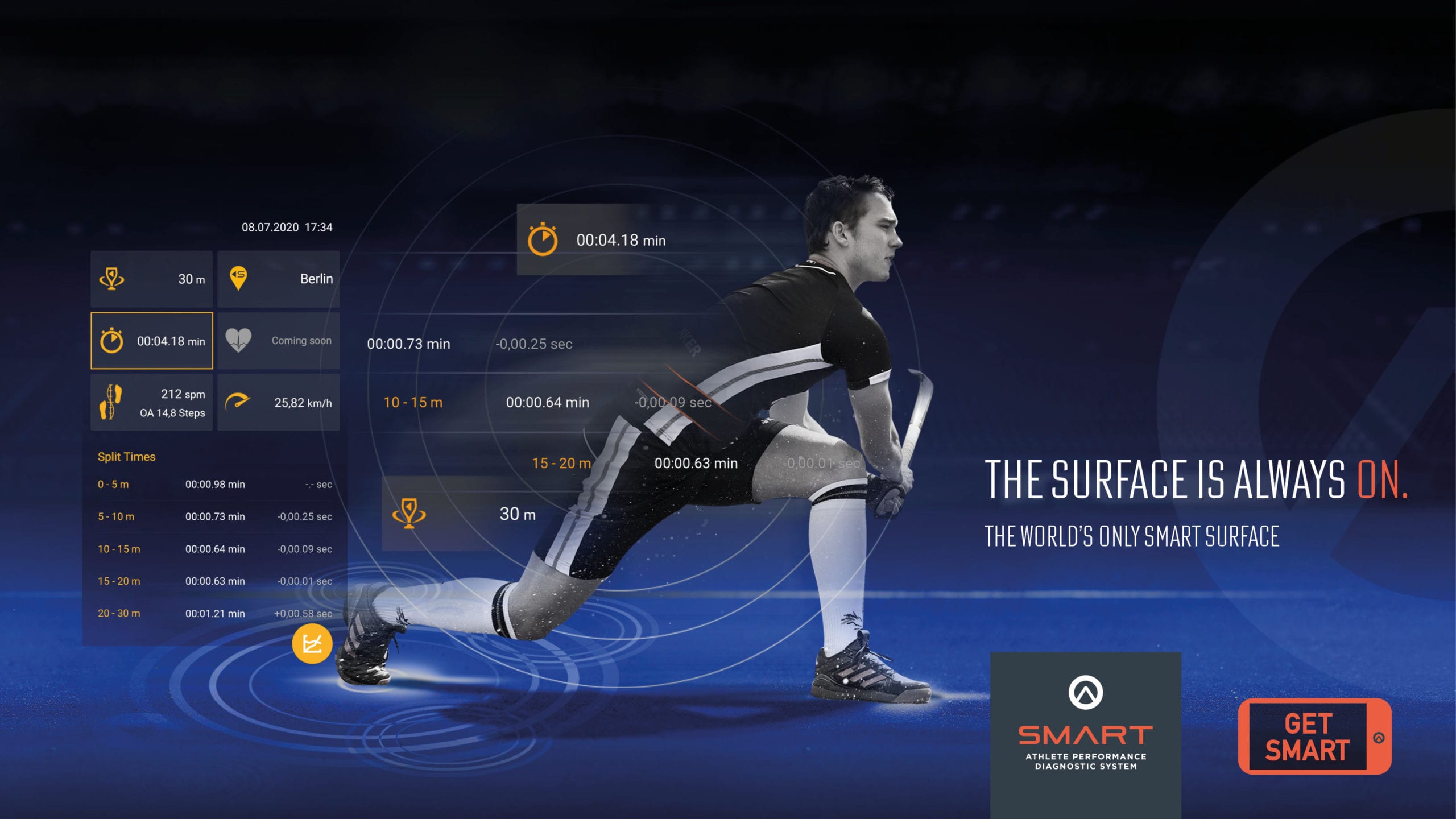Braskem, the largest manufacturer of bioplastics, and Polytan develop sustainable synthetic turf together. In an interview with ON TOP, Martin Clemesha from Braskem’s Marketing & Product Management team explains the benefits.
Braskem and Polytan: bio-based plastics for synthetic turfs
Polytan’s environmental policies are multi-faceted. First and foremost is our commitment to sustainability, not only by ensuring that our products are as green as possible but also that we produce them using renewable energies.
Our policies also encompass the ecological advantages of our synthetic turf pitches, environmentally friendly recycling processes and our social responsibility towards athletes and clubs. One of our main goals is to reduce the amount of plastic originating from fossil raw materials in our products, such as those in our synthetic turf systems.
Together with the Brazilian company Braskem, the world’s largest producer of bioplastics, we have developed a variety of cutting-edge products, including Poligras Tokyo GT – a green technology synthetic turf initially designed for use at the 2020 Olympic Games in Tokyo. Its greatest asset? The raw material used to produce the turf largely consists of the remains of sugar cane that can no longer be used to produce food. Poligras Tokyo GT, as well as all our other artificial turf systems for football and hockey with the GT lettering – are based on I’m green™ polyethylene, a bio-based plastic developed by Braskem.
In the following interview, Martin Clemesha from Braskem’s Marketing & Product Management team explains what these green plastics are all about, how they differ from biodegradable plastics and what role they will play in the future.
The benefits of bio-based plastics
ON TOP: Bio-based plastics: What are they? What is the difference between bioplastics and biodegradable plastics?
Martin Clemesha: Polyethylene is traditionally made from fossil raw materials such as petroleum or natural gas and is found in many everyday items – including food and beverage packaging, cosmetics, plastic bags and much more. I’m green™ polyethylene or ‘green’ plastic, on the other hand, is made from a renewable raw material: Brazilian sugar cane.
In terms of application areas and performance, I’m green™ polyethylene has the same properties as polyethylene made of petrochemical raw materials. In the search for sustainable solutions, I’m green™ polyethylene presented itself as a material with a negative carbon footprint that will help achieve a low-emission economy.
According to the European Bioplastics association, plastics made from renewable raw materials or biodegradable plastics are classified as bioplastics or biopolymers. This means that the plastic made from sugar cane with the I’m green™ designation is a bioplastic, even though the product is not biodegradable. More information is available online: www.european-bioplastics.org
ON TOP: A brief history of plastic: How long has bio-based plastic been around and why is it experiencing a renaissance today?
Martin Clemesha: Organic plastics have been produced for over 100 years. The most well-known example is cellophane, which was invented and patented in 1912. However, it was only in the 1990s that several companies, such as Novamont and Natureworks, began marketing organic plastics as the sustainable alternative to petrochemical plastics. With I’m green™ polyethylene, launched in 2010, Braskem became the world’s biggest manufacturer of organic plastics. Today, we offer over 30 types of organic LDPE, LLDPE, HDPE and EVA.

Renewable raw materials for synthetic turf
ON TOP: The bio-based plastic is called I’m green™ polyethylene. Where does the name come from? How long has the product been in existence? Was it developed by Braskem?
Martin Clemesha: I’m green™ is a brand developed by Braskem to identify the products in our portfolio that are made from renewable raw materials. To help our customers recognise products that contain ‘green’ polyethylene and/or EVA, Braskem has created the I’m green™ seal. These products must meet certain criteria set by Braskem in order to use the I’m green™ seal. Since 2007, the company has been constantly developing and improving the production technology for green ethylene and I’m green™ plastic from bioethanol.
ON TOP: What are the product properties of I’m green™ polyethylene and where is it used?
Martin Clemesha: I’m green™ polyethylene is made from Brazilian sugar cane, i.e. a renewable raw material, and the properties are the same as polyethylene made from petrochemical raw materials. I’m green™ polyethylene is used in many everyday products, including flexible and rigid disposable packaging for food, beverages and cosmetics, but also in durable applications such as vases, household goods and of course in Polytan’s synthetic turf.
ON TOP: Does I’m green™ polyethylene offer the same quality as high-quality polyethylene plastic made from petroleum? Are there differences when it comes to recycling?
Martin Clemesha: The mechanical properties and finish of I’m green™ polyethylene are identical to those of products made from petrochemical resins. This means that no investment in new equipment is required when using I’m green™ plastics and the process parameters do not usually need to be significantly altered as it is a “drop-in biopolymer”. I’m green™ polyethylene can be recycled, just like conventional polyethylene.
ON TOP: How is I’m green™ polyethylene made? As a manufacturer, what does Braskem look for in production?
Martin Clemesha: Ethanol from sugar cane is delivered to Braskem, dehydrated in our plant and converted into green ethylene. The resulting monomer is used to produce the I’m green™ polyethylene in the polymerisation plant. This sugar-cane-based plastic is supplied to converters, who subsequently manufacture plastic products from it.
To reaffirm its commitment to sustainable development and also include the ethanol production chain, Braskem has developed a responsible ethanol sourcing programme. This programme is based on two central pillars: compliance and excellence.
By compliance, we mean that all suppliers adhere to the Code of Conduct stipulated by Braskem. This Code of Conduct sets out operational standards in dealing with staff, the environment and local communities, and provides guidance on quality and efficiency.
Excellence involves a programme of continuous improvement that focuses primarily on key points within the ethanol production chain.
ON TOP: Climate change is one of the dominant issues of our time. Will the demand for bio-based polyethylene increase and what challenges will this bring for Braskem?
Martin Clemesha: Demand for organic plastics that are scientifically proven to have a reduced carbon footprint and strong performance will certainly continue to grow. We can then gain a new market share – particularly in countries where measures are implemented to close the competitive gap between biopolymers and conventional plastics. The biggest challenge is to minimise the risk associated with investments made as part of expanding our production capacities. Braskem is committed to retaining its market-leading position.
ON TOP: How do you respond to critics who claim that growing sugar cane for industrial plastics results in the destruction of rainforests and also takes food away from people?
Martin Clemesha: Firstly, it’s important to note that sugar cane grows poorly in the Amazon. Most of Brazil’s sugar cane is grown over 2,000 kilometres away from the rainforest, and our suppliers are required to add only degraded pastureland to their cultivation.
What’s more, Brazil has 301.1 million* hectares of arable land, of which 52.6 percent is used for livestock farming. 18.8 percent of arable land is fallow and 28.5 percent is used for agriculture. Only 1.4 percent* of Brazil’s total arable land is used for ethanol production, and the ethanol demand for the production of I’m green™ polyethylene is only about 1.8 percent of total ethanol production, which is equivalent to 0.02 percent of Brazil’s arable land.
The availability of arable land combined with possibly more intense livestock farming means Brazil is a country with potential for agricultural expansion. The use of arable land to grow products other than food should only occupy a small portion of the available land – even if you bank on the optimistic scenario that chemicals will increasingly be made from renewable raw materials.
In the state of São Paulo, for example, where 60 percent* of Brazil’s sugar cane is grown, attention is paid to crop rotation with legumes, thereby fixing nitrogen in the soil. 15 to 20 percent of the area earmarked for sugar cane is also used to grow soybeans, beans and peanuts for food production. Detailed information about this can be found on the website for the Sugar Cane Industry Association (UNICA).
Braskem focuses on sustainability
ON TOP: Can you tell us a little bit about Braskem’s development?
Martin Clemesha: From a global perspective, we will focus more on people in the future and increasingly on sustainability. Braskem is committed to making a greater contribution to the circular economy through its value chain.
The petrochemical company has nearly 8,000 employees and they work every day to make people’s lives better through sustainable chemicals and plastics. Braskem is innovative and offers an extensive portfolio of plastic resins and chemical products for different sectors within the manufacturing industry, such as producers of food packaging and health and hygiene products, but also for the construction industry, the automotive sector, the agricultural industry and many more.
With 41 industrial plants in Brazil, the USA, Mexico and Germany, Braskem has net sales of R$52.3 billion (US$13.2 billion) and exports its products to customers in over 100 countries.
ON TOP: How do you see the future of bio-based plastics? Could bio-based plastics eventually replace petroleum-based plastics completely?
Martin Clemesha: The proportion of bio-based plastics will certainly increase and enjoy a much higher market share in the future.
*Sources: IBGE, Conab and UNICA. Data compiled by ICONE and Unica.




